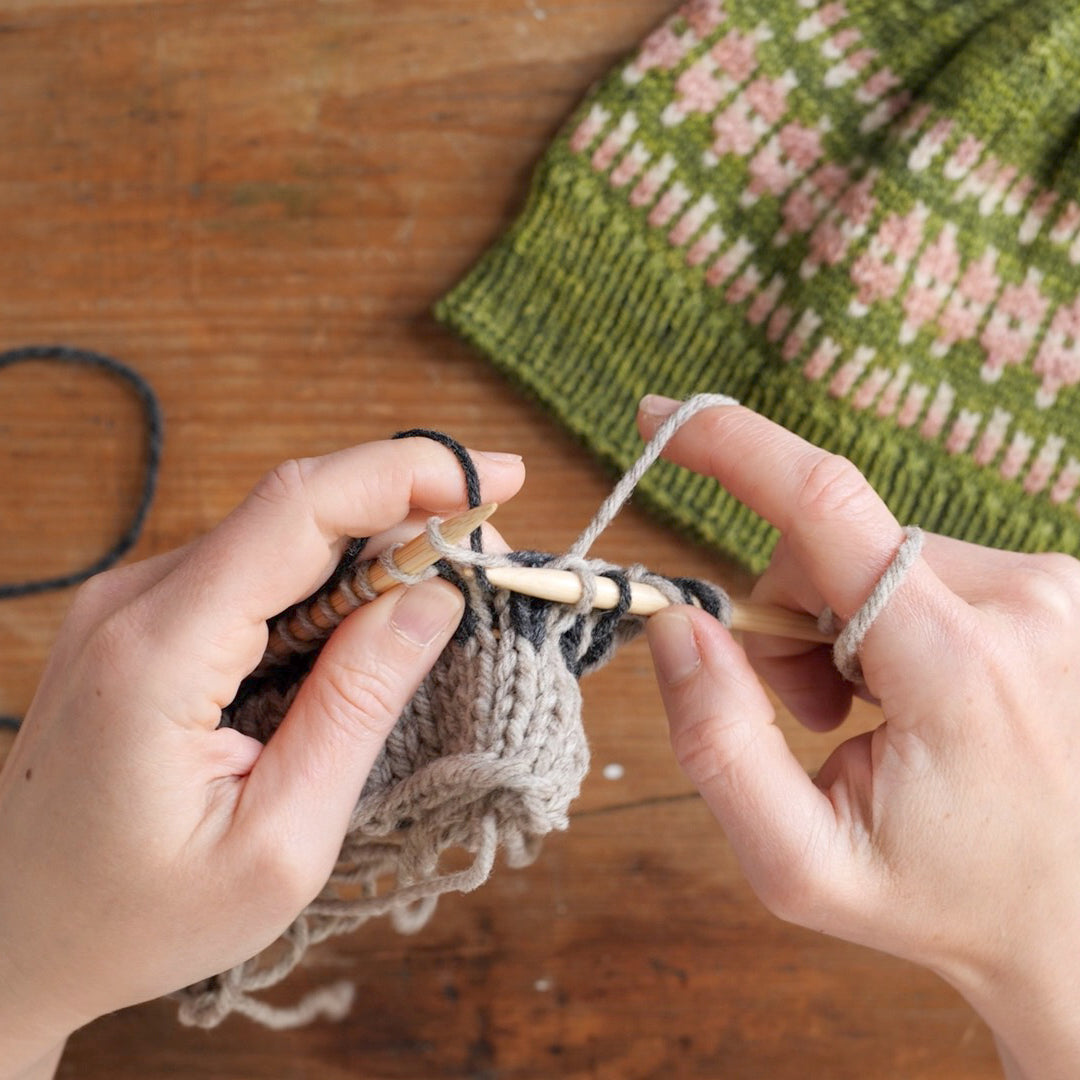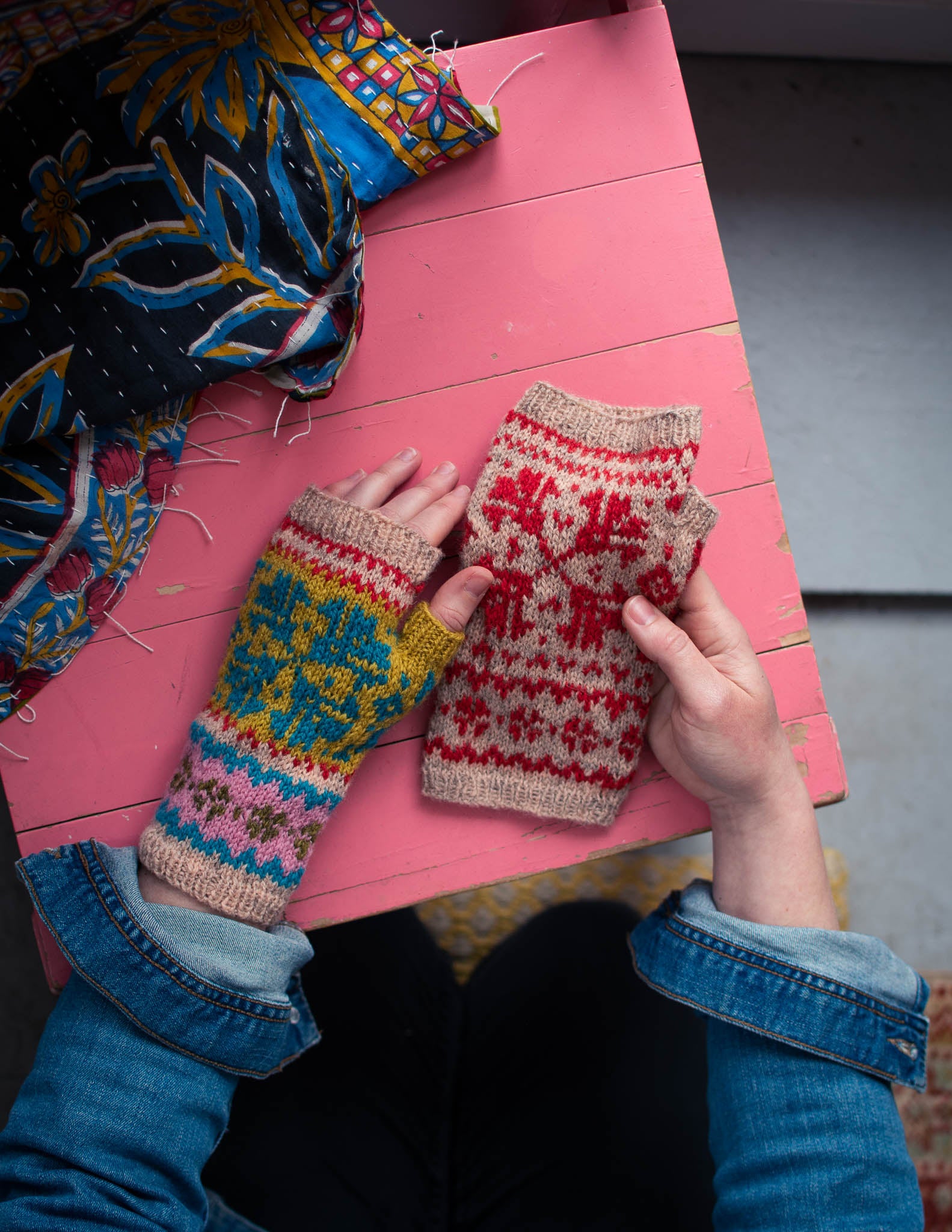
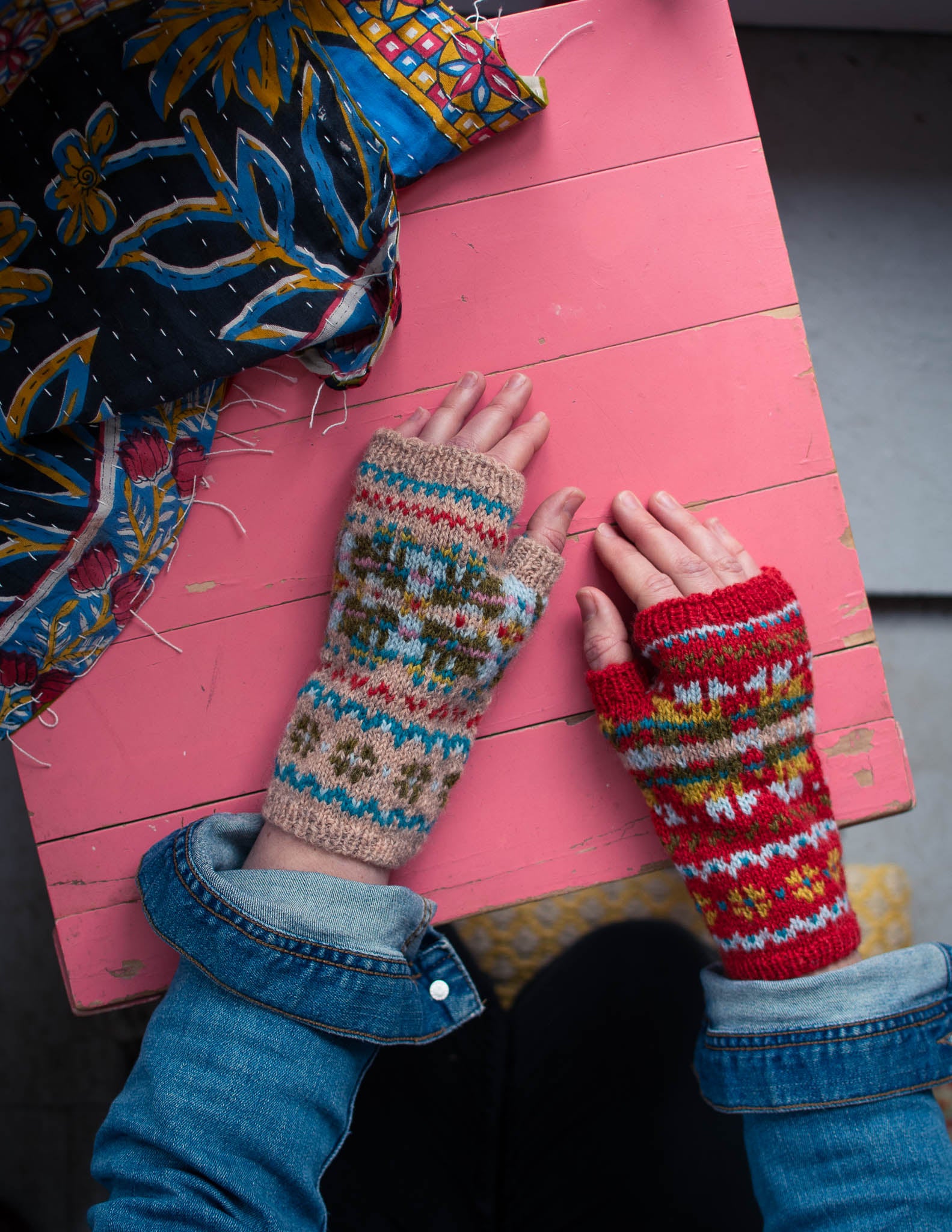
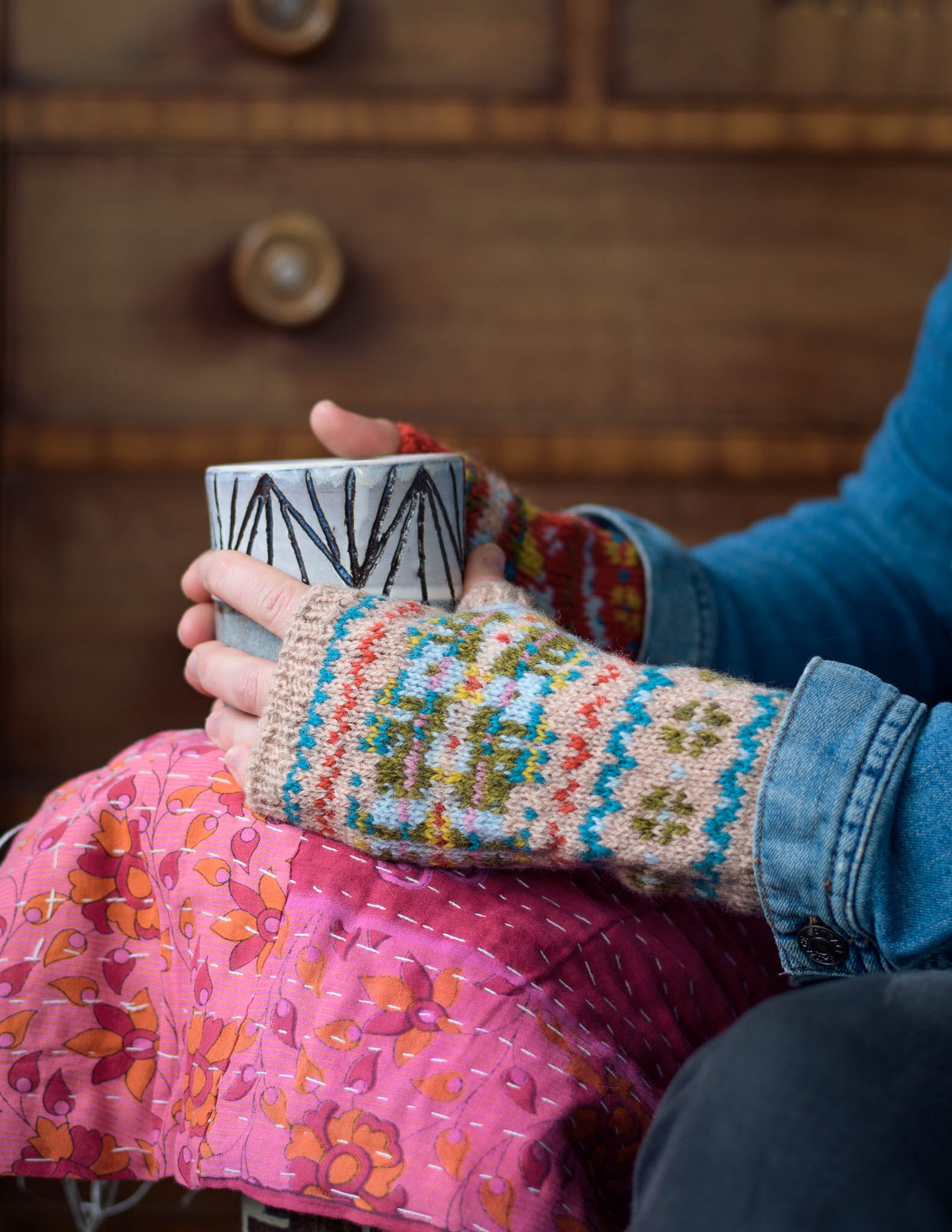
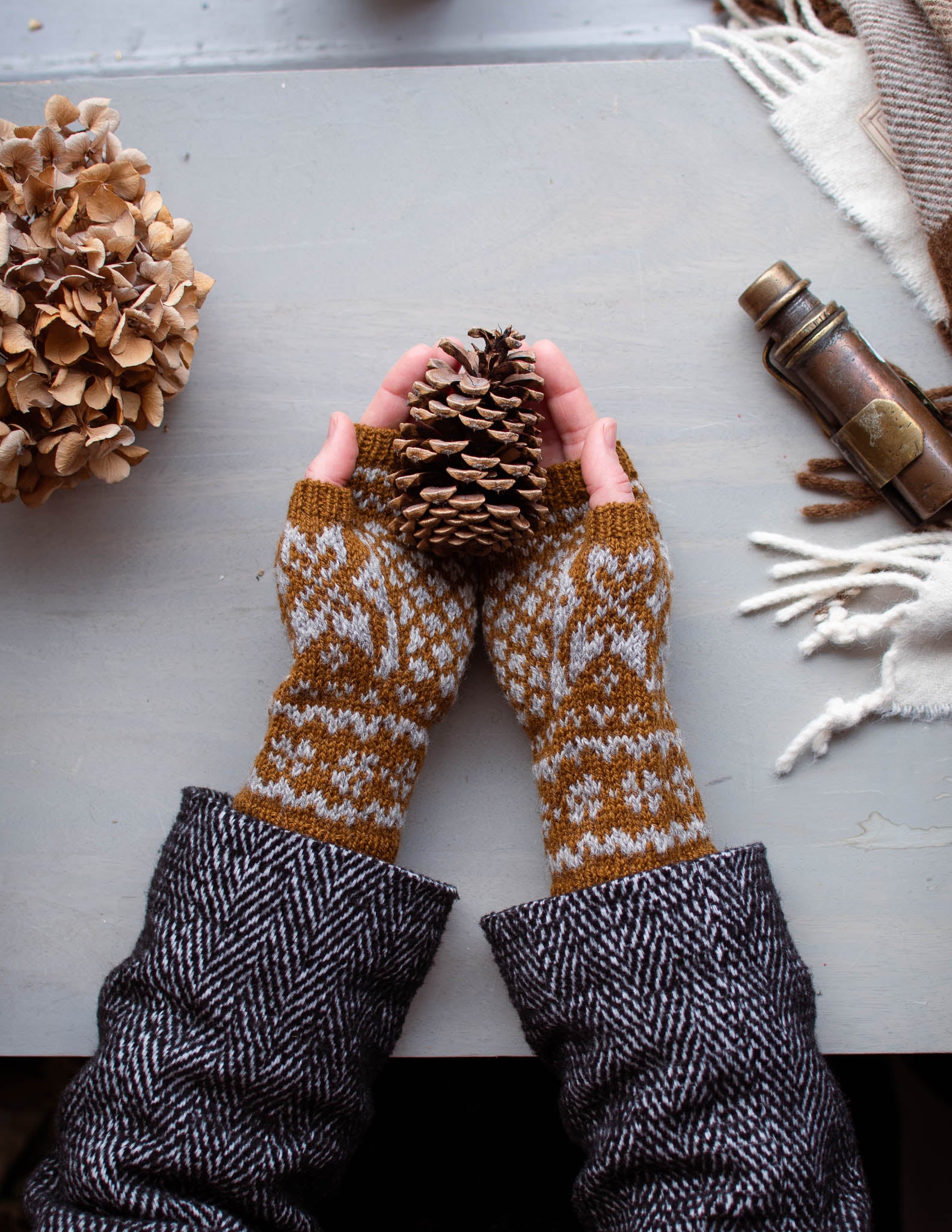
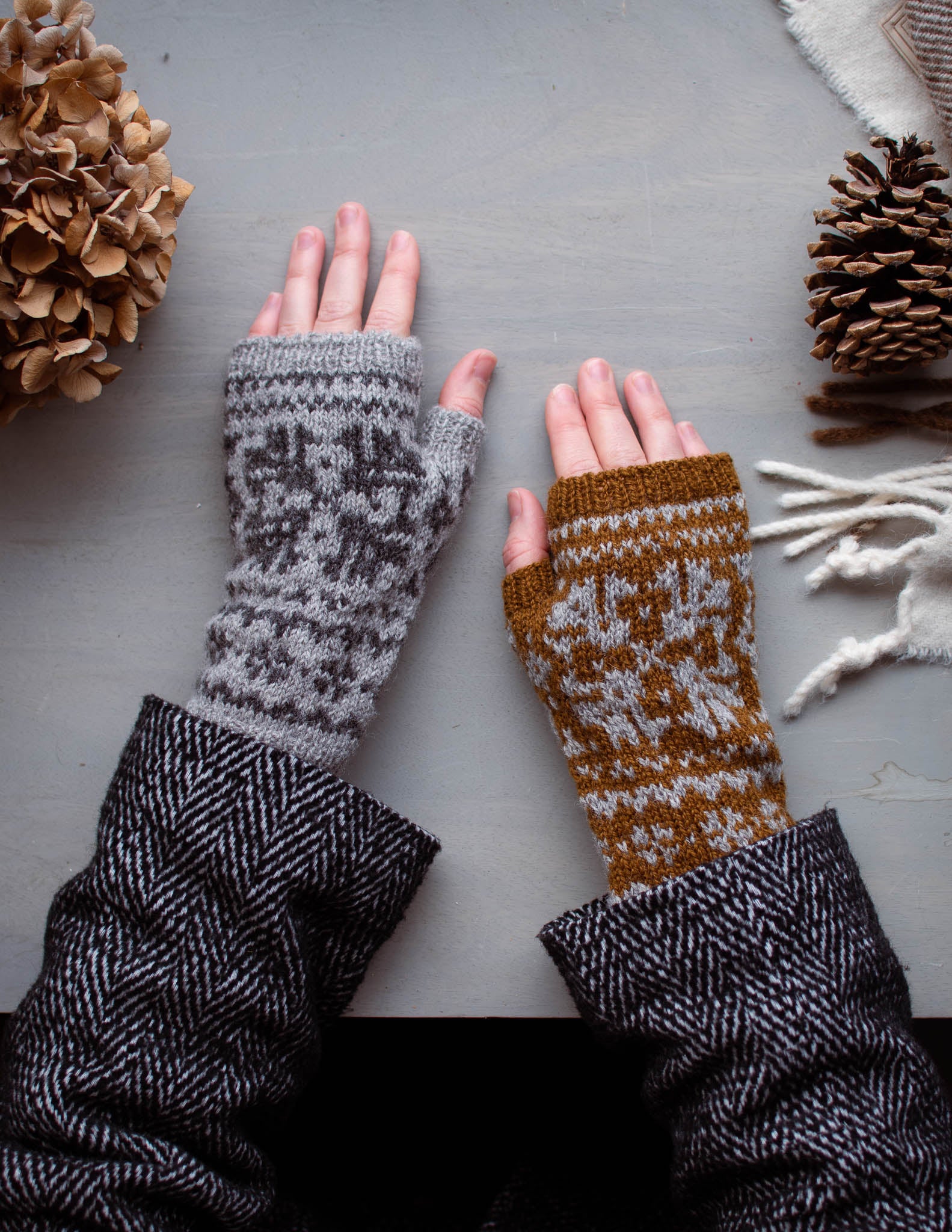
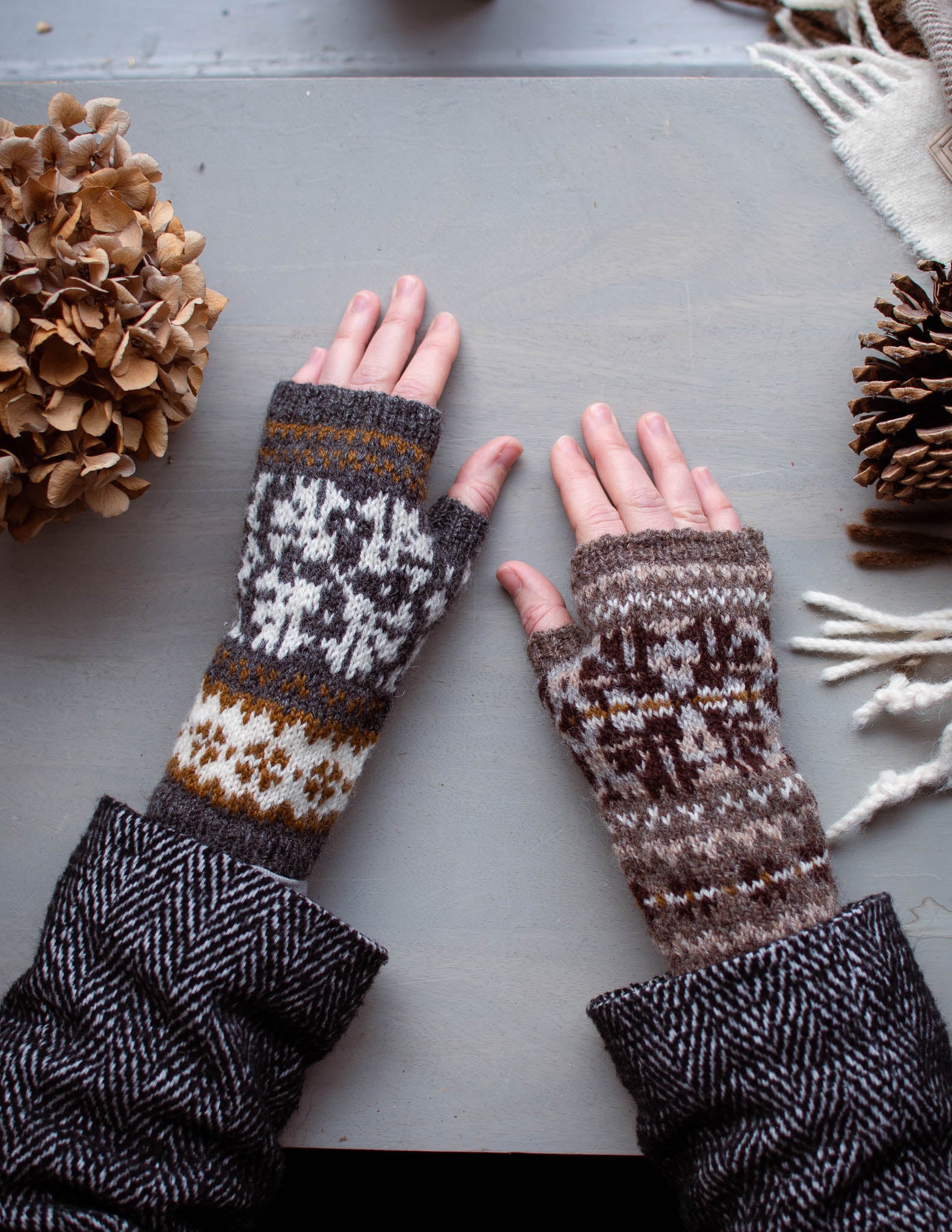
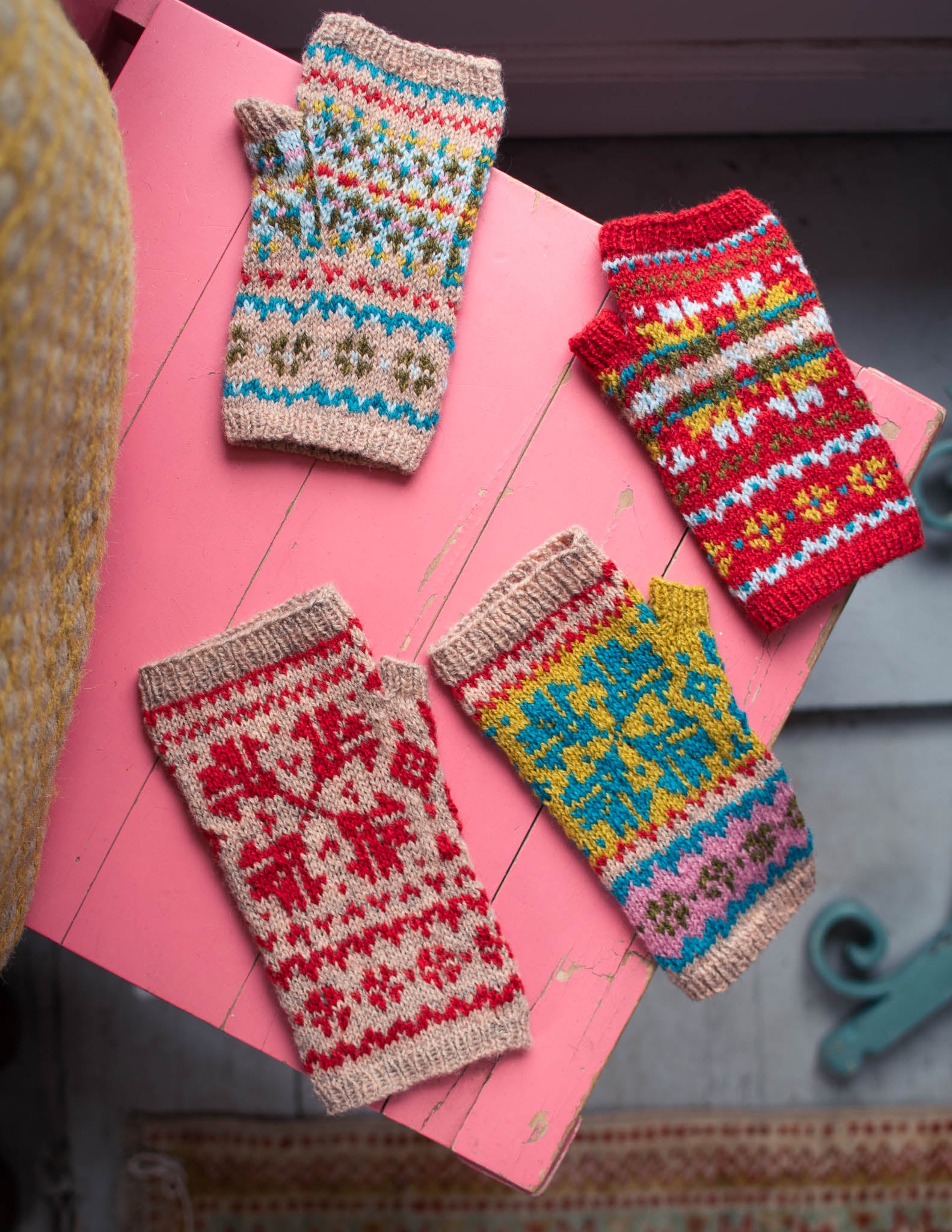
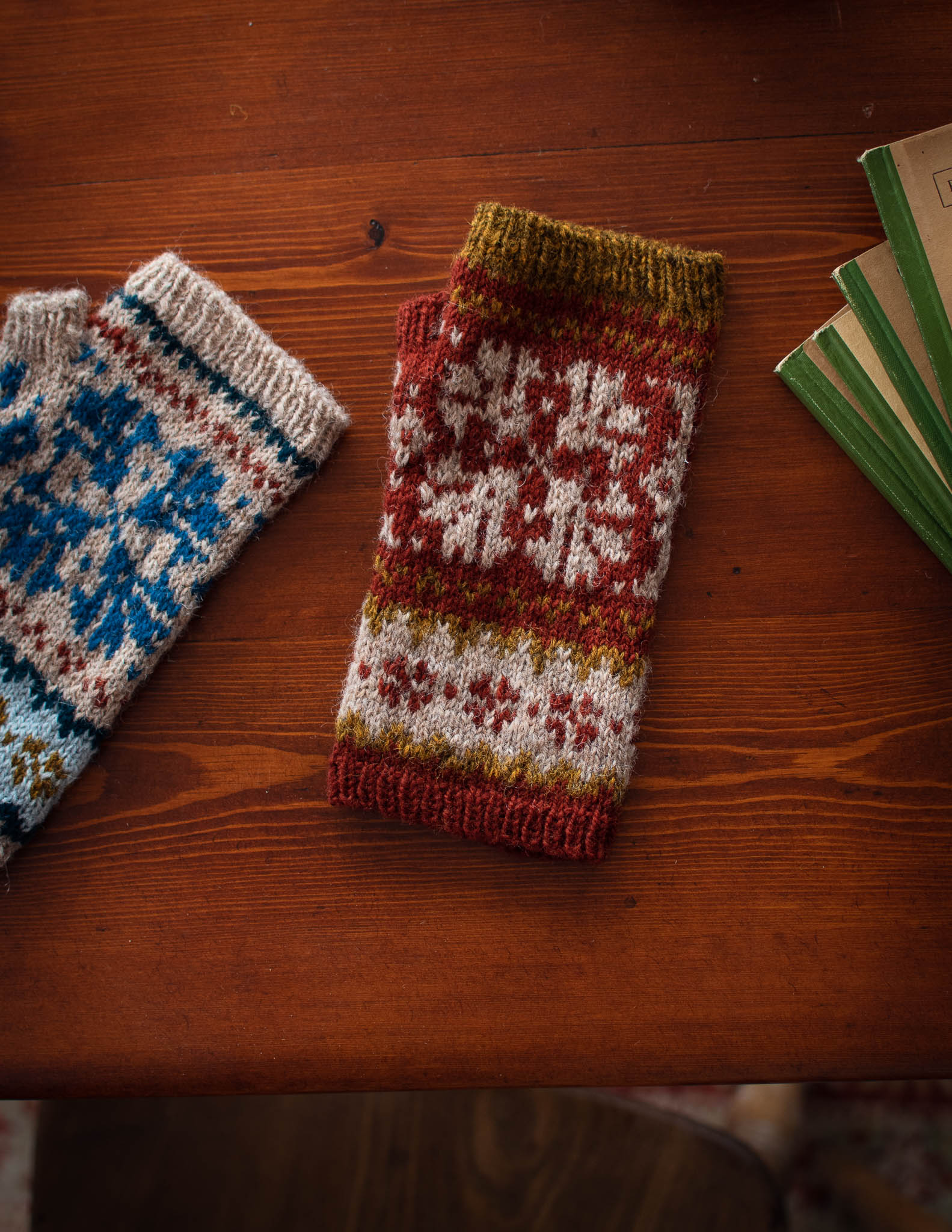
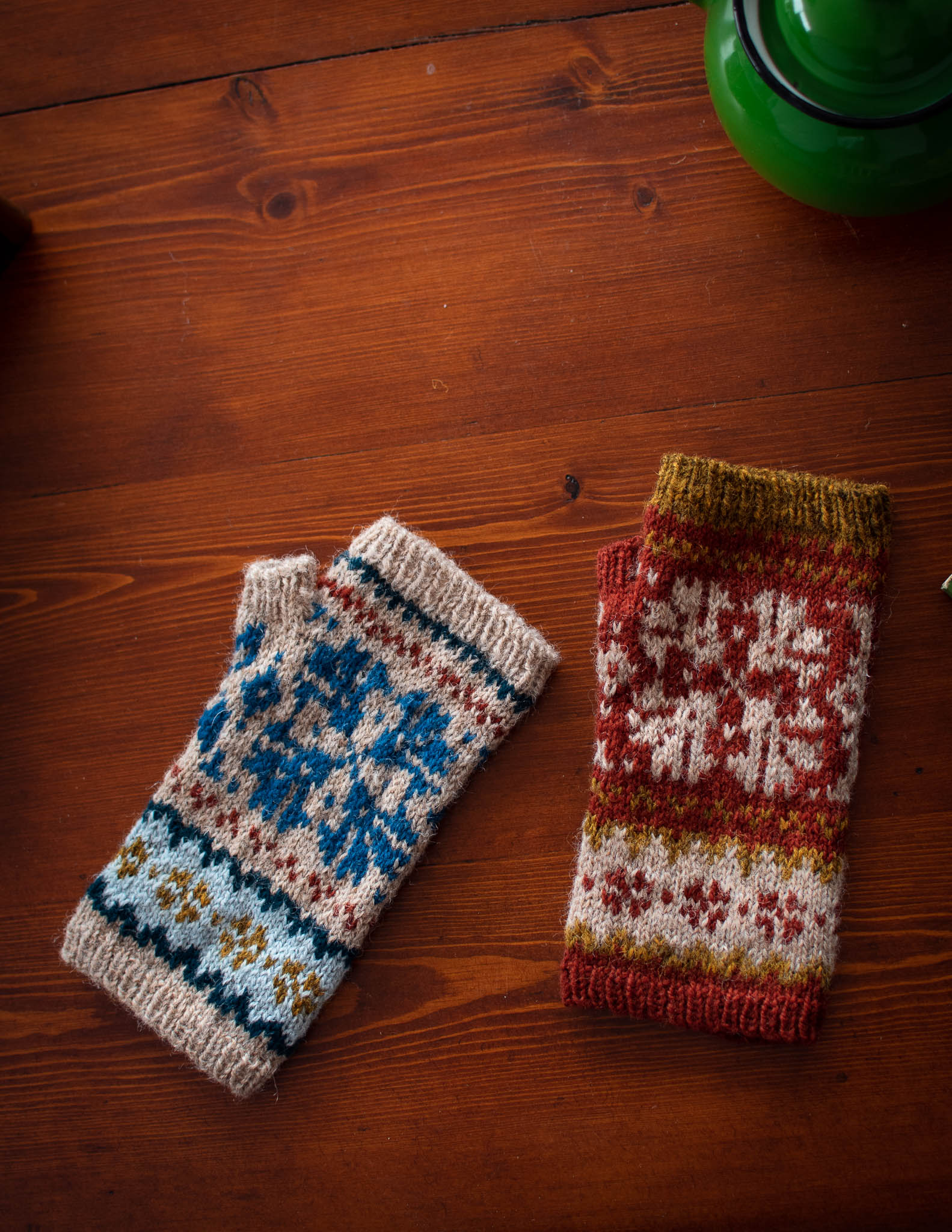
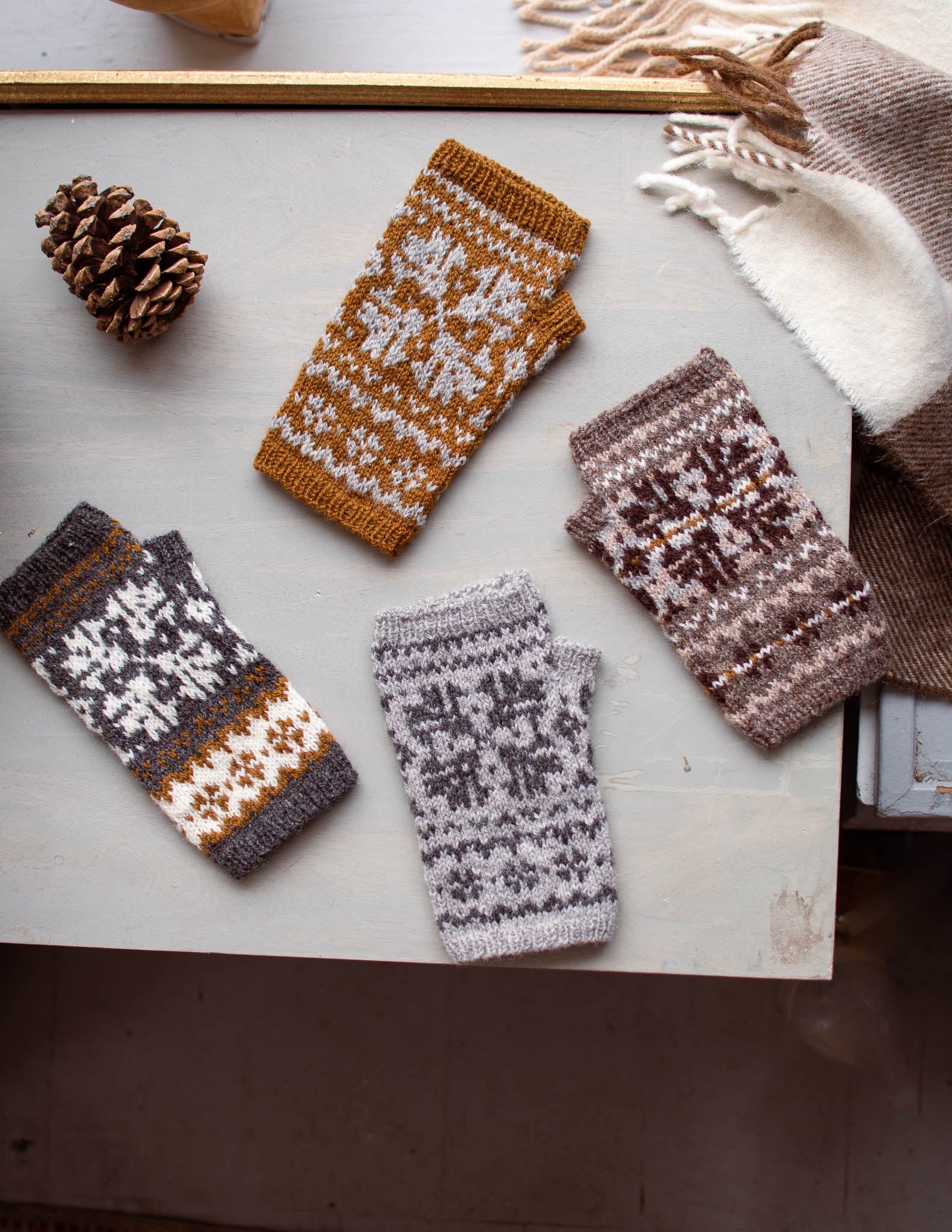
Davoch
- 4ply / Fingering weight yarn
- Also available in Colourwork Club
- Also available on Ravelry
A Nordic style fingerless mitten rooted in baltic knitting traditions that allows you room to get creative and play with colour. Davoch is worked in two contrasting colours featuring a star-esque design that will have you feeling ready for crisp winter days.
The Davoch mitts take inspiration from several interconnected mitten traditions, and the skills you’ll develop knitting them open up a whole world of mitt and mitten knitting. The single “star-esque” motif on the back of the hand is reminiscent of Norwegian Selbu mittens, which fair-isle knitters combined with their own colour blending traditions. The motif itself is based on an Estonian garment pattern, where mittens tend to be worked with smaller allover patterns.



Details
Work the mitts in two contrasting colours for a Nordic feel, shade the motifs fair-isle style, or recall Latvian and Estonian mittens by using a different colour combination for each section. The endless possibilities highlight how much room for creativity there is in playing with colour on the same pattern.
Skills for knitting this project
Build your skills by following the links to our clear step-by-step tutorials.
- knitting, purling
- casting on
- binding off
- ssk decreases
- k2tog decreases
- working small circumferences in the round
- colourwork (using a chart)
- make one increases
- tubular bind off
Gauge
For small and large mitts
32 sts and 32 rnds = 4” / 10cm in stranded colourwork pattern on larger needles
For medium and x-large mitts
30 sts and 30 rnds = 4” / 10cm in stranded colourwork pattern on larger needles
Sizing
Available in four sizes — small[medium, large, x-large].
Finished circumference: 6 3/4[7 1/4, 7 3/4, 8 1/4]" / 17[18, 19.5, 20.5]cm.
Finished length: 8[8 1/2, 8 1/4, 8 3/4]" / 20[21.5, 20.5, 22]cm.
Learn all of the skills you need to make Davoch with our beginner colourwork course. The Stranded Colourwork Basics course is a 4 week self-guided online knitting course, with continued access to the course so that you can return to each chapter for a refresher, again and again, whenever you need.
Supplies
Yarn
Heavy fingering / sport weight wool yarn.
Shown in Rauma Finull PT2 (100% Norwegian wool, 191 yds / 175m, 1.76oz / 50g).
Total yarn approx: 180–205 yds / 165–185m.
Main colour approx: 125–140 yds / 115–130m.
Contrast colours: the yarn amounts needed will vary depending on how many contrast colours you use and how you decide to arrange the colours.
Needles and notions
The needle size that works best for your yarn will depend on your individual tension. The recommended needle size for the yarn is a good starting point.
Version information





















